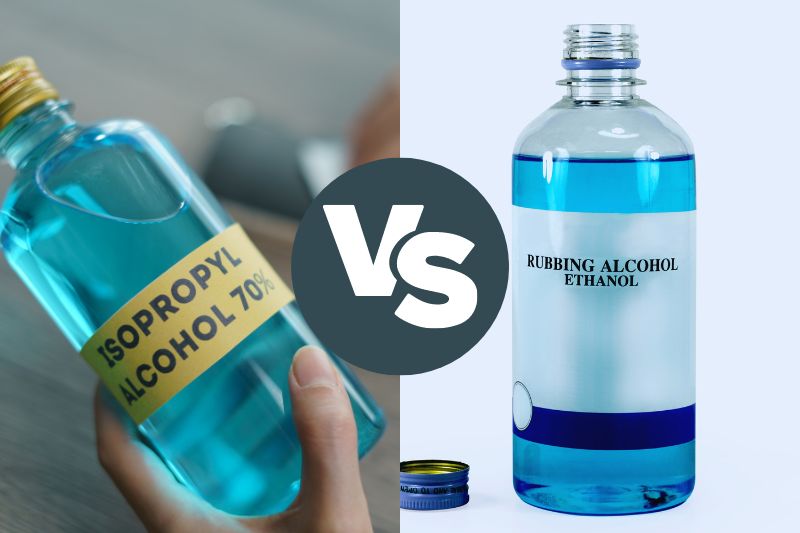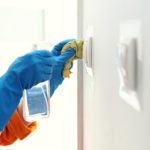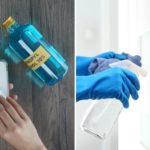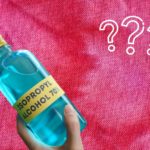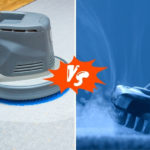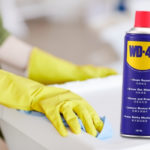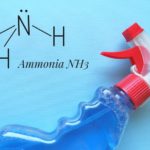If you’re a fan of homemade or natural cleaners, you might have come across uses for isopropyl alcohol. These include odour eliminators, stain removers, jewellery cleaners, and more.
But it’s not super common for us to have isopropyl alcohol laying around at home, and is far more likely that you’ll have rubbing alcohol.
Can you use it in place of isopropyl alcohol, and what are the differences between the two products?
In this article, we’ll look at the similarities and differences of isopropyl alcohol vs rubbing alcohol for cleaning. First, let’s start by defining the terms.
What Is Isopropyl Alcohol?
Isopropyl alcohol, also called isopropanol, is a common industrial grade alcohol.
Unlike the alcohol we drink, it’s not naturally produced by fermentation and isn’t safe to consume. Instead, it’s made from acetone or propene.
Isopropyl alcohol is a very common industrial disinfectant that has a proven record of killing bacteria, viruses, and even fungi.
It’s used in everything from commercial and household products to sterilising lab equipment and manufacturing.
What Is Rubbing Alcohol?
Rubbing alcohol, on the other hand, can be made of either isopropanol or ethanol (the type of alcohol alcoholic drinks contain).
Depending on its purpose, it might also contain essential oils, perfumes and colours.
Rubbing alcohol isn’t necessarily used for rubbing. The name came from the American prohibition era to distinguish it from consumable alcohol. Rubbing alcohol basically means non-drinkable alcohol.
As mentioned earlier, isopropyl alcohol isn’t safe to drink anyway. Although ethanol is, rubbing alcohol also contains ingredients that make it taste or smell horrible. This is called denatured alcohol.
Isopropyl Alcohol vs Rubbing Alcohol: Similarities
In some instances, isopropyl alcohol and rubbing alcohol can basically be the same product. As this isn’t always the case, let’s look at the main similarities between them.
1. They both work as disinfectants
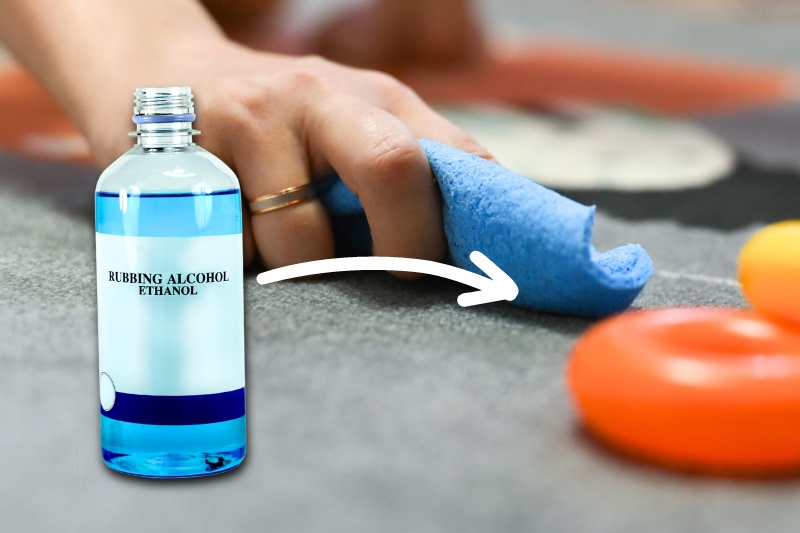
The alcohol in both products is an incredibly effective disinfectant, killing pretty much any microbes you might want dead.
Alcohol breaks down the proteins within cells, causing them to die. As such, it works on bacteria, viruses and fungi.
Both products contain enough alcohol to do this, although concentrations can vary wildly (as we’ll discuss below).
2. Both can contain water
You can buy 100% pure isopropyl alcohol, but this isn’t as effective at killing microbes.
One study found that higher levels of water (50% alcohol vs 90% alcohol) killed microbes faster.
This is because the water slows down the evaporation speed of alcohol, giving it more time to do its thing.
The most effective (and most common) concentration is 70% alcohol – the same for both products.
Available concentrations of isopropyl alcohol can range from 10%-100%, but rubbing alcohol is usually 68%-72%.
3. Both should be used carefully
The alcohol content of both products means you should be very careful how you store them.
While ethanol-based rubbing alcohol is technically the safest, you still don’t want to be drinking it.
The alcohol concentration is far too high and it could cause some serious damage (not to mention how bad it’ll taste).
Similarly, both are flammable, and isopropyl-based products are toxic.
Ideally, you’ll want child-safe bottles that are stored well away from kids and pets, and only use the products in well-ventilated rooms.
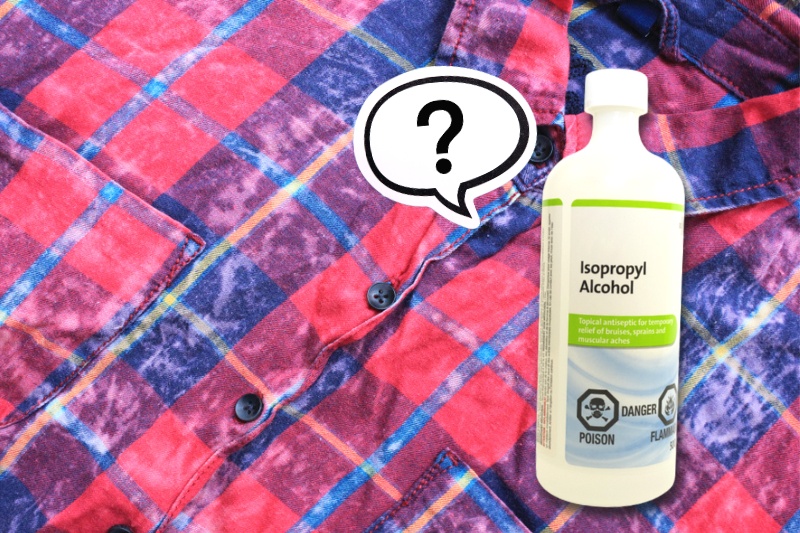
Isopropyl Alcohol vs Rubbing Alcohol: Differences
On the whole, isopropyl and rubbing alcohol are fairly similar products. That said, there are a couple of differences that could affect how we use them for household cleaning:
1. Rubbing alcohol has additives
While both products contain water, rubbing alcohol contains other additives, such as colours, scents, and essential oils.
This means it might not be a good idea to use rubbing alcohol for, say, getting rid of stains or sticky residue.
After all, there’s little point in trying to remove a stain with something that might also stain!
2. Rubbing alcohol has a less strict definition
Isopropyl alcohol is used in industrial applications, so its ingredients are regulated.
While there’s regulation around rubbing alcohol, there’s far more variety in what it can contain. For example, it could be one of two types of alcohol.
This can affect how you use it for cleaning, as you might specifically want isopropyl alcohol rather than ethanol. However, it’s not difficult to find an ingredients list for the product you buy.
Isopropyl Alcohol vs Rubbing Alcohol for Cleaning
So, what can you use these products for around the home, and is one better than the other? Let’s find out.
1. Quick disinfectant
We’ll start with the obvious: both can be used as quick disinfectants. You can use them neat, but mixing in a bit of extra water will make them go further.
However, make sure you don’t dilute the alcohol to less than 50%, as that’s when they stop being as effective.
For example, if you have 70% concentration, you’d mix 2 parts water to 5 parts alcohol at most.
The higher the original concentration of alcohol, the more water you can add and it still be effective.
2. Cleaning metal
Alcohol is also a really good metal cleaner, whether stainless steel, chrome or something else.
Either buff the metal with a clean cloth after disinfecting, or spray a small amount of neat alcohol directly onto it. Let it evaporate and then buff. This method also works on jewellery.
3. Ink remover
Both products can be effective as ink removers, although you’ll obviously want to use a colourless and odourless rubbing alcohol for this.
Soak the affected area in alcohol for a few minutes and then blot with a paper towel. Either wash the whole item or clean the area with water.
4. Getting rid of hairspray residue
If you do your hair in front of a mirror, you might notice the mirror (and everything else) gets coated in a thin film of hairspray.
Isopropyl alcohol is one of the most effective ways to remove it without leaving behind streaks. Simply soak a cotton pad in alcohol and rub it over the affected area.
5. Deodorising non-washable items
The most obvious use for a deodoriser is shoes, but you could use alcohol on other non-washable items.
Spray some neat isopropyl alcohol into the shoes and let it evaporate.
You should be able to use this method on other items, such as leather, suede or microfibre. Provided the water content is low enough, the alcohol will evaporate quickly and not leave any marks.
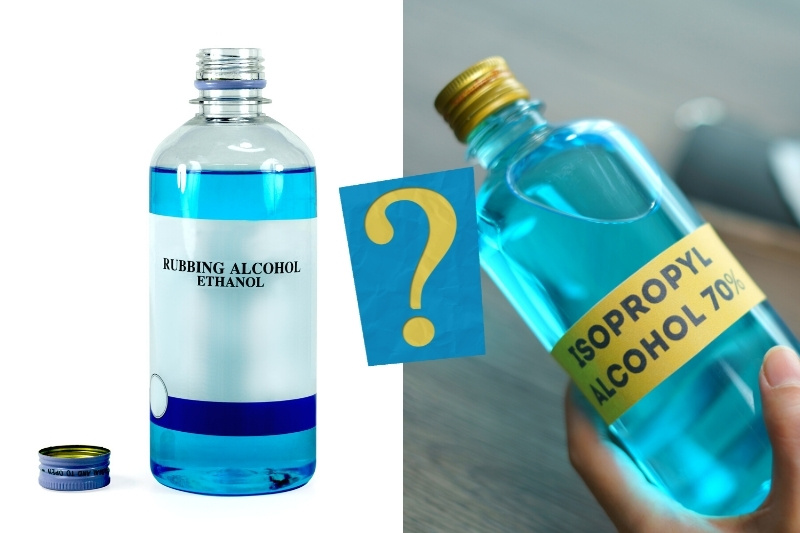
Isopropyl Alcohol vs Rubbing Alcohol: Which Is Best?
The bottom line is that both rubbing alcohol and isopropyl alcohol are decent household cleaning products.
Isopropyl alcohol makes more sense because it’s a higher concentration, meaning you can water it down yourself as needed.
Another benefit is that you don’t have to worry about it having added colours or oils that could impact its cleaning ability.
However, for general household disinfecting and deodorising, both products will do a great job. So, if you’ve got some rubbing alcohol lying around at home, don’t be afraid to use it!

Jacob is a writer based in Wales, where he lives with his partner and two dogs. All his work is fuelled by extensive research and buckets of coffee.
